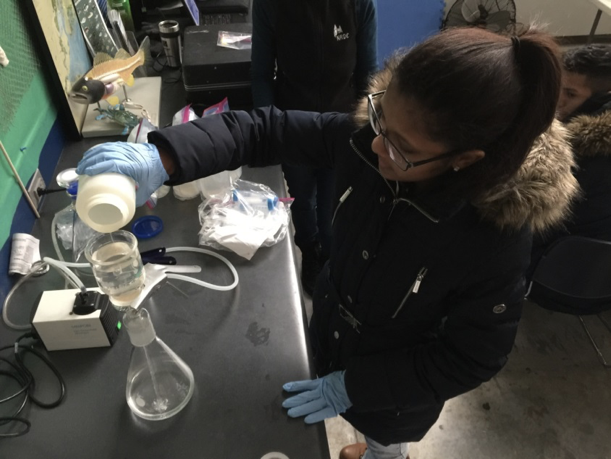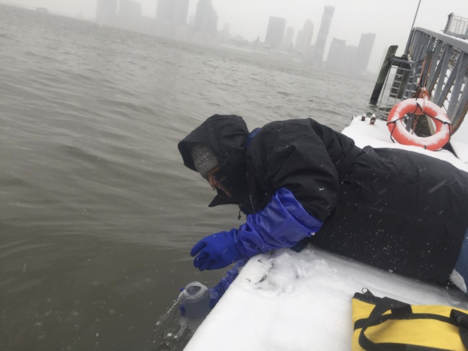Did you know that more than 70 species of fish live in Hudson River Park’s 400-acre Estuarine Sanctuary? In the past, HRPK’s staff scientists have determined what fish reside in Park waters using traditional survey methods such as catch & release fishing and traps. In 2018, the Park expanded its fish surveys by also collecting and analyzing aquatic environmental DNA – eDNA for short.
DNA is genetic material possessed by all life and carries information about how a living thing will look and function. Aquatic eDNA is genetic material from the sloughed cells and feces of living marine organisms. This means that within the Park’s Sanctuary waters, we can find a myriad of wildlife DNA in a liter sample of water, including oysters, seahorses and mallard ducks.
eDNA is an exciting and emerging tool that Park scientists are using to gain a greater understanding of local fish biodiversity and population dynamics on a seasonal scale. Paired with traditional fish survey methods, eDNA can provide a more continuous picture of what fish species are using the River and when.
HRPK scientists collect water samples twice a month from Piers 25, 66 and 84 as part of a regular monitoring program that engages students in the analysis of eDNA in the Park’s Sanctuary waters. During eDNA field trip programs, students support scientists by collecting and filtering water samples, enabling a hands-on exploration of genetics, biodiversity and ecosystem health. From there, staff scientists extract DNA from the samples to then isolate and amplify present fish DNA.
For this research project, we partner with experts from the Cold Spring Harbor Lab (CSHL). CSHL researchers support with processing and analyzing Hudson River Park DNA samples to decode the DNA information collected. Using a method called DNA sequencing, CSHL researchers accurately match extracted DNA fragments from Hudson River Park samples to the DNA sequences of fish species commonly found within our Estuarine  Sanctuary.
Sanctuary.
After piloting these methods over the past two years, we have learned that eDNA surveying helps create a more detailed year-round profile of the fish populating our Park’s waters. The eDNA monitoring program complements our traditional fish survey methods and is helping us understand a fuller picture of the Sanctuary’s biodiversity. We are happy to see presence of native fish species that do not often inhabit our cages including sculpin, carp, mummichog, mackerel and menhaden.
As Hudson River Park scientists continue to collect and analyze eDNA, we look forward to gaining an even clearer picture of the diverse ecosystem thriving within our estuarine waters. We’ll be sure to share what we discover!
